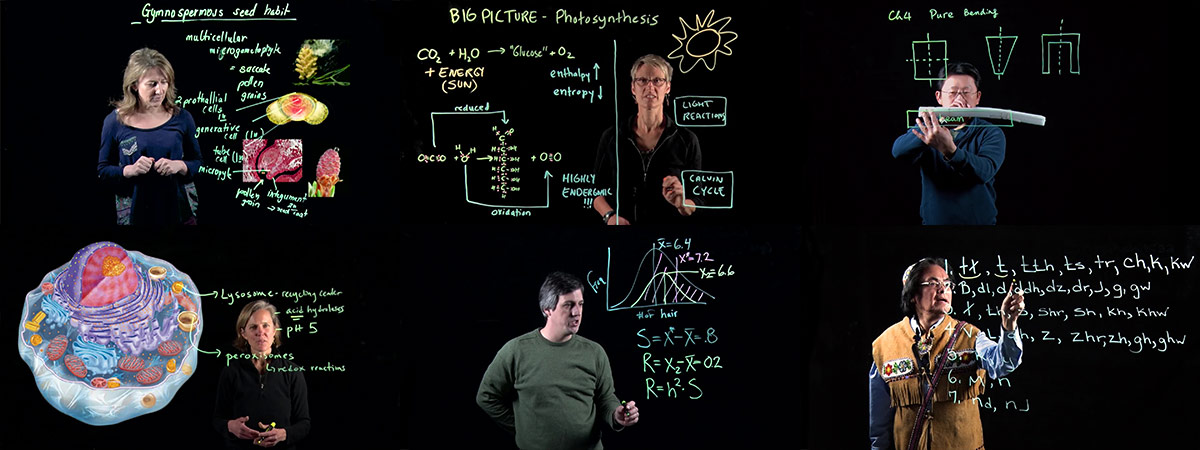
The Learning Glass, or Lightboard – call it what you will, is quickly becoming adopted at universities by instructors and designers as a practical method of jumpstarting the traditional talking head or whiteboard instructional video. At the University of Alaska Fairbanks, we have been aware of the tool for a couple of years, first stumbling across the very good and pioneering instructions put together by Michael Peshkin of Northwestern University. At that time, having no space to put such an object, and not being engineering professors who felt qualified to build a large glass-supporting assembly, we treated the tool like so many others that come across your desk – as a novelty that we couldn’t justify owning ourselves.
A year or so passed, and Owen Guthrie, a fellow instructional designer, attended a conference held at GWU in Washington, DC, and came across information on the homebuilt setups at other universities such as Vanderbilt and University of Florida.
We still really didn’t feel like building one. The cost of our time, and the potential for wasted materials or a substandard result seemed like obstacles we weren’t willing to attempt to hurdle.
But we saw what others saw in it. I remarked at the time that this “could be a killer app for engineering/science faculty who just can’t get over the admittedly cumbersome tech hurdles with pencasting/screencasting.”
We really just wanted to buy something that already worked and innovate from that point, rather than making half a dozen trips to Lowe’s and hauling glass and steel across campus at 30 below. Owen found that one of the early adopters of this tech, Matt Anderson at San Diego State, was also manufacturing and selling units, termed “Learning Glass” rather than Lightboard (I do not believe this is a trademarked term). We bought one right away, and after dealing with some difficulties in the shipping process to Alaska, made it a part of our media studio space.
We have had it in our space for about 8 months, and have already produced over 100 videos for faculty using the glass.
Last month at the Conference on Higher Education Pedagogy, two staff members from Wake Forest University presented on their implementation cycle and discoveries on building their own Lightboard unit (including a great deal about how they overcame institutional inertia and limited budgets to make it a reality). Seeing their similar but relatively unique approach was eye-opening and I learned something, as well as developed the urge to build a very cheap portable version. One very important point that they made was that (other than this Educause review) there currently is no peer-reviewed literature in educational technology or pedagogy journals on the implementation, use, or theoretical foundations behind the application of a learning glass to the creation of distance or flipped video materials.
We have found that simply installing one is not enough, that users have to be coached, and that there is a rather slow learning curve for instructors to make content that they are satisfied with. Response from both instructors and students has been overwhelmingly positive, but there is the possibility to deliver unengaging and visually poor content via this tool. Considering that the mixture of technologies that comprise a Lightboard are each not particularly new, but that in gestalt they seem revolutionary or the tool of the moment, I wonder what adoption and use rates will look like in 5 to 10 years, once any novelty wears off. I would like to explore these questions in further blog posts.